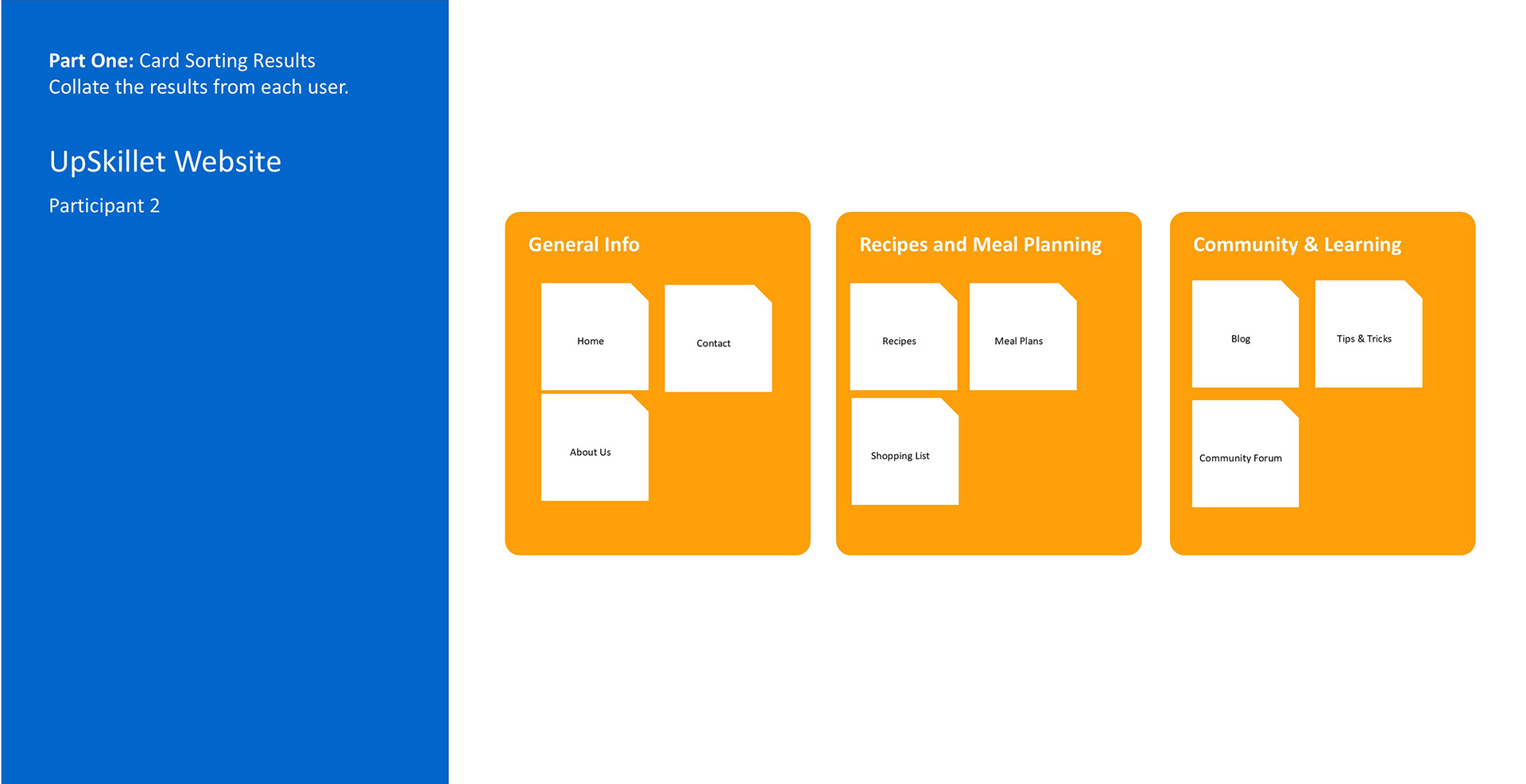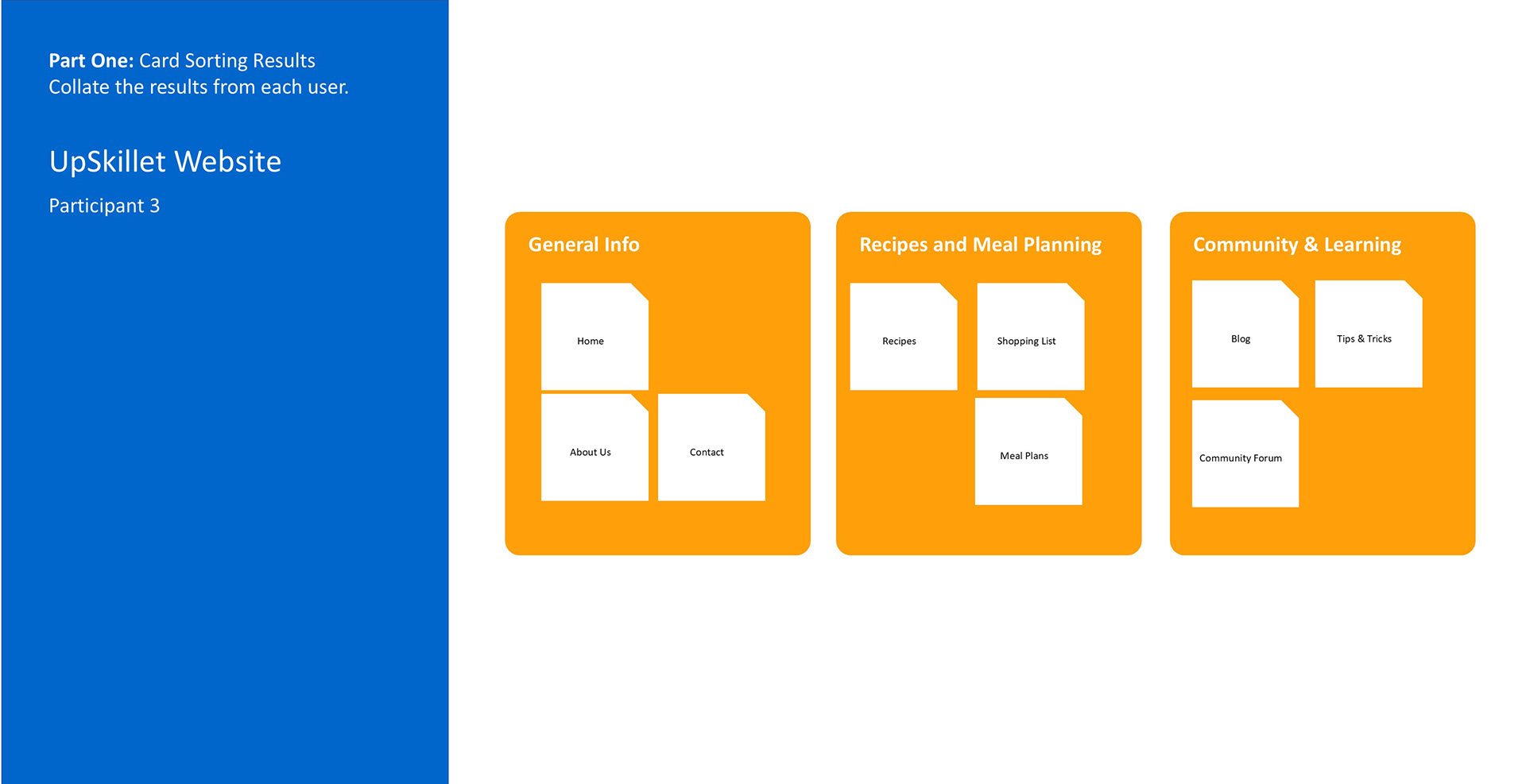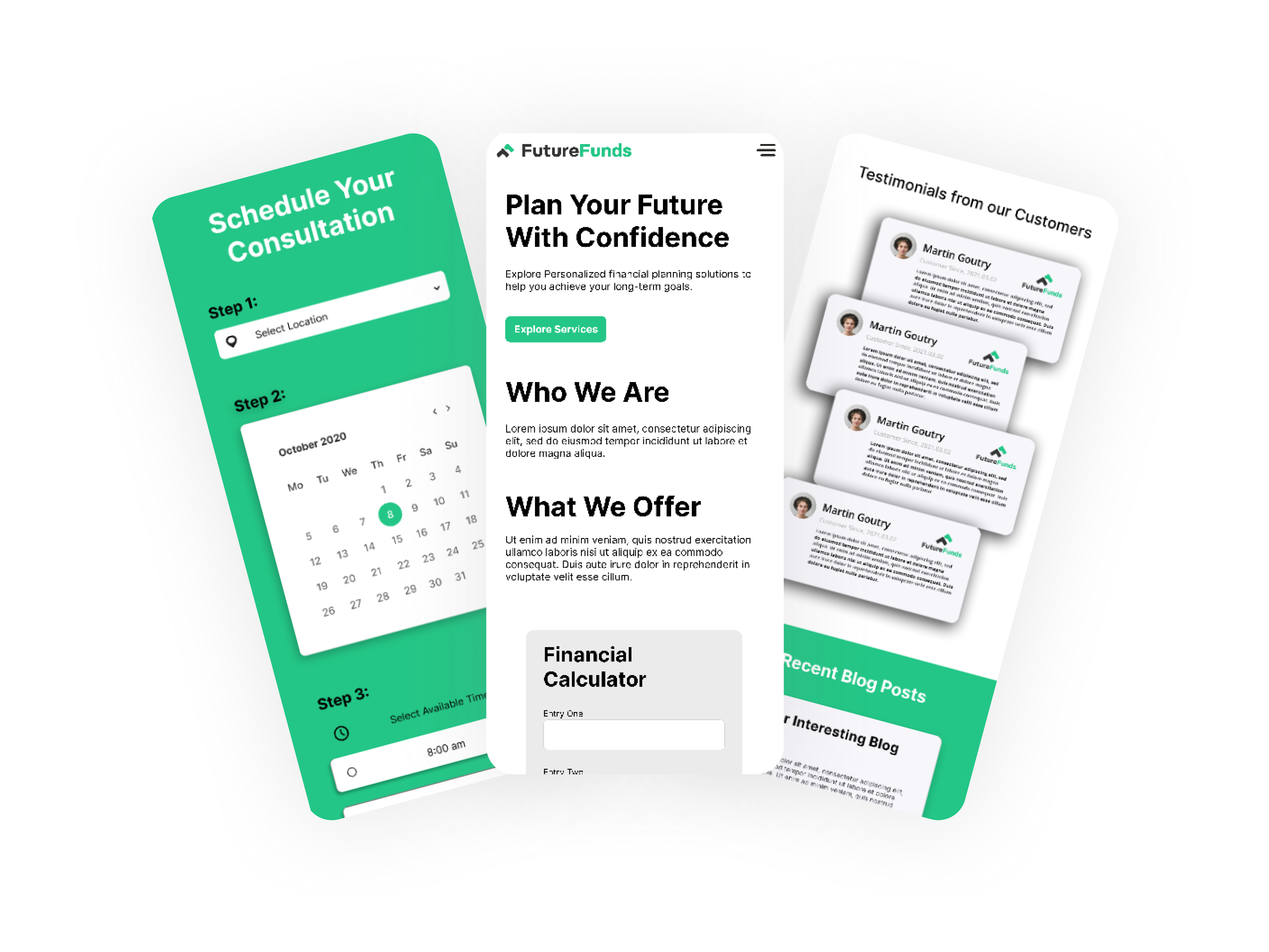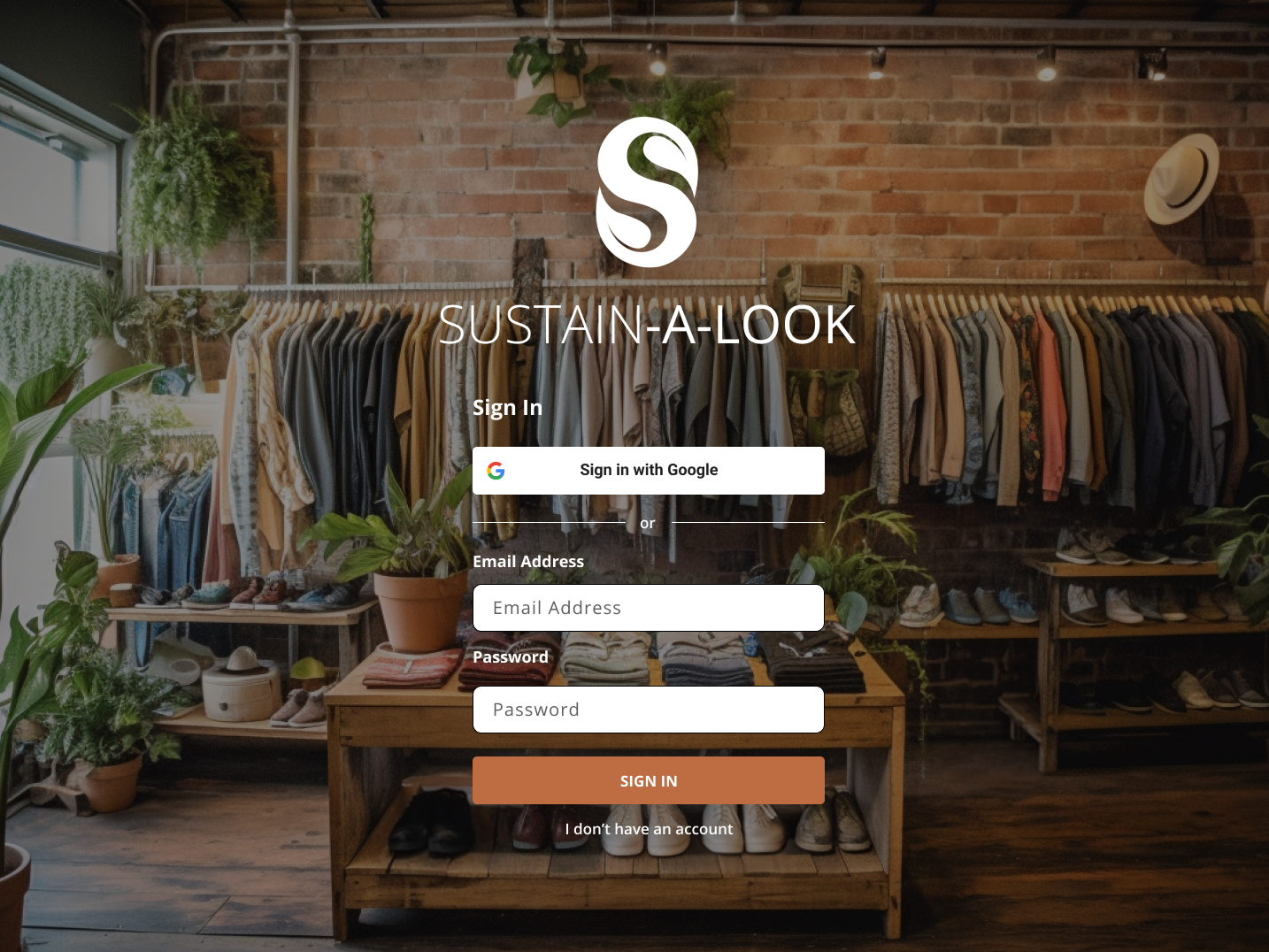Project Overview
Client: UpSkillet
Role: Lead Information Architect
Tools Used: Adobe Illustrator, PowerPoint, Microsoft Word, PDF Pro, card sorting analysis, and UX research methods
Project Duration: 3 weeks
Role: Lead Information Architect
Tools Used: Adobe Illustrator, PowerPoint, Microsoft Word, PDF Pro, card sorting analysis, and UX research methods
Project Duration: 3 weeks
Problem
UpSkillet, a recipe-based website, was facing low user engagement. Analytics showed users visited only one page per session, limiting SEO performance and revenue goals. The goal was to evaluate and redesign the site’s information architecture to increase engagement and usability.
Part 1: Content Audit & Site Map
I conducted a full content audit of the existing UpSkillet website prototype and mapped the current information structure.
Key Observations:
Navigation was broad but lacked a focused hierarchy.
Redundant links and vague category labels created user confusion.
Recipes, tools, and classes were siloed despite their overlapping relevance.
Deliverable: A visual site map created in Adobe Illustrator, summarizing current content and navigation.
Recommendations:
Group related content (e.g., recipes and meal planning).
Simplify top-level navigation.
Add a community engagement layer.
Part 2: User Journey Mapping
Using the provided persona "Marcus – The Adventurous Eater," I created a 7-phase journey map that explored his end-to-end experience using UpSkillet.
Highlights:
Marcus wanted authentic Thai recipes before studying abroad.
He struggled to verify authenticity, find ingredients, and save content.
The recipe experience lacked filtering, personalization, and support for re-engagement.
Outcome:
Designed opportunities to improve search filtering, add cultural context to recipes, introduce step-by-step visuals, and enable saved recipes.
Part 3: Card Sorting & Information Architecture Analysis
I conducted a hybrid card sorting exercise with 3 users and compared results to additional card sorting data from the client.
Findings:
Users consistently grouped content into six intuitive categories: Recipes, Tools, Learning, Community, Personalization, and General Info.
Confusion arose around meal planning vs. shopping lists and community-generated content.
Outlier categories (e.g., beginner recipes) were useful but not widely adopted.
Actions Taken:
Created new category labels to match user mental models.
Adjusted site taxonomy and cross-linked overlapping content.
Drafted a hypothesis: Aligning the IA with user expectations would reduce bounce rates and improve engagement.



Final Thoughts & Impact
Through content auditing, persona journey mapping, and user-driven card sorting, I proposed a new IA strategy for UpSkillet focused on:
Reducing cognitive load
Improving discoverability
Enhancing personalization and user retention
Next Steps:
The redesigned structure informed wireframe development for desktop and mobile views in the next project phase.
Updated sitemap to reflect research findings and improve IA


